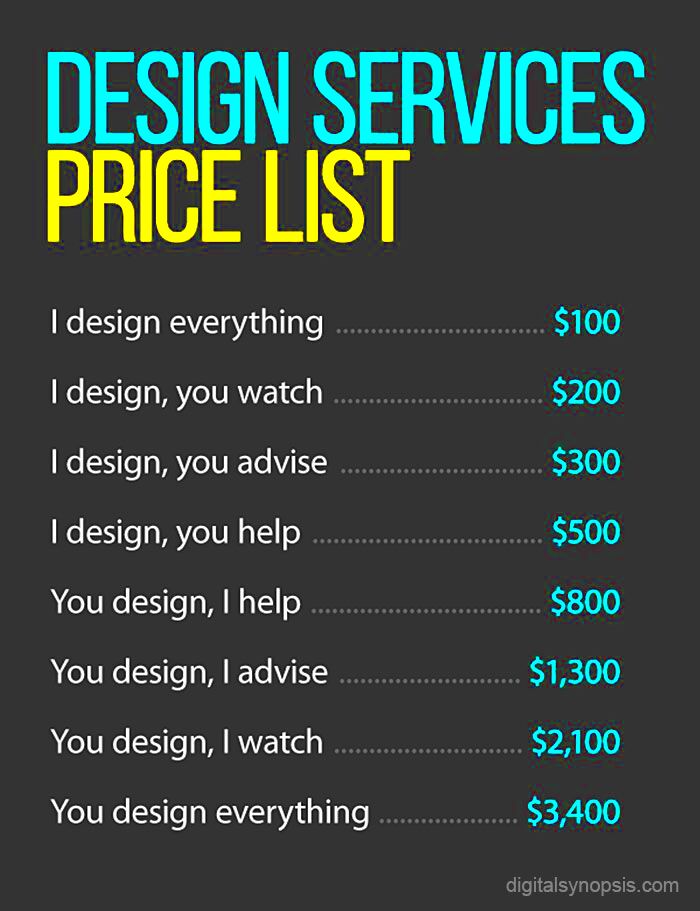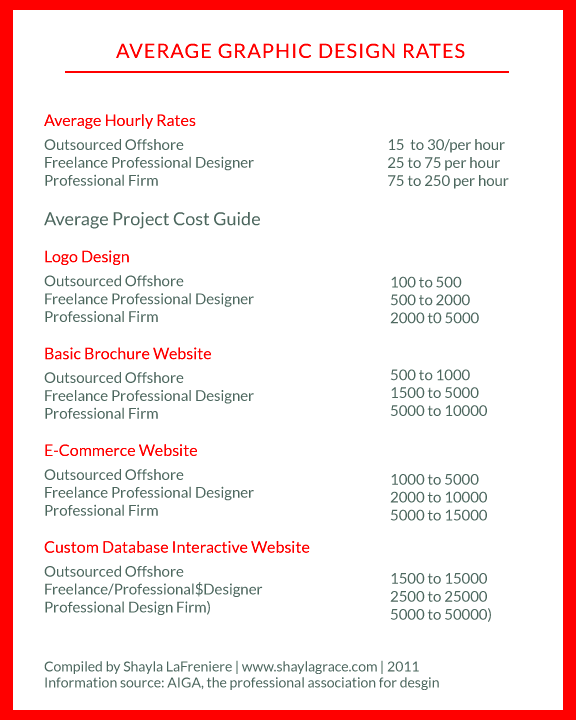In the beginning, the problem of how much to charge can be too overwhelming when one is still new in freelance graphic designing. It is necessary to set prices that represent your expertise, time and what you are worth as a designer. When charging very low it makes your work feel less valuable but when overcharging potential customers may not come near you at all. Achieving this equilibrium is vital in building a thriving freelance profession.
Usually, one of the subsequent methods is adopted for pricing by graphic designers:
- Hourly Rate: Charging for the hours spent on a project.
- Flat Rate: A set fee for the entire project, regardless of hours.
- Retainer Fees: A regular fee for ongoing work.
All strategies have their merits and demerits; by comprehending these you will be able to make an informed decision regarding which is most appropriate for yourself.
Factors That Influence Pricing for Graphic Design Projects

There are several elements to consider when determining how to price your graphic design projects. Some of these include:
- Project Complexity: More intricate projects typically require more time and skill, which justifies higher rates.
- Client Budget: Understanding a client's financial capacity can guide your pricing strategy.
- Market Rates: Research what other designers in your area are charging to stay competitive.
- Your Expertise: If you have specialized skills or extensive experience, you can charge more.
- Turnaround Time: Urgent projects often demand a premium.
These elements will help you in setting the right prices that correspond to the worthiness of your task.
Also Read This: A Guide to Becoming a Freelance WordPress Developer
Evaluating Your Skills and Experience in Graphic Design
The rates that are determined by your skills and experiences. Pause for a moment and have an honest look at your own skills. You may ask yourself:
- What specific design skills do I possess?
- How many years have I been working in this field?
- What types of projects have I completed successfully?
If you are an expert in branding or possess an impressive portfolio, it is easy to justify higher rates. Perhaps, you can create a table that highlights your skills and experience:
| Skill | Experience Level | Market Value |
|---|---|---|
| Logo Design | Intermediate | $50-$100/hr |
| Web Design | Advanced | $75-$150/hr |
| Print Design | Beginner | $25-$50/hr |
Assessing your abilities instills confidence in you regarding rate-setting and communicating value to customers.
Also Read This: What is Fiverr in Dollars? Understanding Fiverr’s Pricing Structure
Different Pricing Models for Freelance Graphic Designers
Setting prices for freelance graphic designing services can be a difficult task. Every client is different and has unique requirements that must be met in different ways. The timing of this sale depends on several factors and it is up to you to choose the right model that works best for you and your clients. Depending on what you are looking for, there is always a better option among the three major models discussed here.
Here are three examples of popular pricing models:
- Hourly Rate: This is straightforward—charge clients based on the hours you spend working. It’s great for projects with uncertain scopes. However, clients might hesitate if they think a project will drag on.
- Flat Rate: Set a fixed fee for an entire project. This can be appealing for clients who want to know the total cost upfront. Just make sure to accurately estimate how long it will take you to complete the project!
- Value-Based Pricing: Charge based on the value your design brings to the client’s business. This requires a good understanding of the client's goals and how your work can help them achieve those. It can lead to higher earnings if you’re confident in your impact.
You would choose the correct model often depends project type, client preference and your work style. By trying out various models, you can discover one that works best for your freelance business.
Also Read This: What is Fiverr Market Cap?
How to Set Your Rates Based on Project Type
When it comes to staying in the green and making sure that you’re getting what you deserve, putting your prices based on how projects are classified is very significant. Depending on project type, there are variations in the degree of dedication, time and know-how; thus, it is important to match your prices according to those differences.
Following are some types of projects that are frequently contracted and suggestions on how to charge for them:
- Logo Design: A key element for any brand, logo design can range from $200 to $2,000 depending on complexity and your experience level.
- Website Design: A more comprehensive project, website design might range from $1,000 to $10,000 based on features and customization.
- Social Media Graphics: These can be charged per piece or as a package. Rates could range from $50 to $500, depending on the number of graphics and the platforms involved.
- Print Design: Projects like brochures or posters often start around $300 and can go up based on the quantity and design intricacies.
Building a pricing table is one way to enable clients understand your charged fees:
| Project Type | Typical Rate |
|---|---|
| Logo Design | $200 - $2,000 |
| Website Design | $1,000 - $10,000 |
| Social Media Graphics | $50 - $500 |
| Print Design | $300+ |
Aligning your rates to the nature of projects can help you communicate your worth to clients more effectively and also help you get paid well for the jobs that you do.
Also Read This: How to Provide Google Page Links for Your Fiverr Website
Communicating Your Pricing to Clients Effectively
Once set it’s important to make sure that your customers understand your rates for the purpose of building trust and guaranteeing a smooth experience. Failing to be transparent about pricing may lead to confusion while; on the other hand, clear communication makes them comfortable with what you charge.
Here are a few suggestions on how to communicate your price nicely:
- Be Clear and Concise: Present your rates in a straightforward manner. Use simple language and avoid jargon.
- Provide Context: Explain the value behind your rates. Share your expertise and how it benefits the client.
- Use Visuals: Consider using a pricing table or brochure to outline your services and rates clearly. Visual aids can help clients grasp your offerings quickly.
- Prepare for Questions: Clients may have queries about your pricing structure. Be ready to discuss your methodology and rationale for your rates.
- Negotiate Wisely: If clients request lower rates, be prepared to discuss what services can be adjusted or eliminated to meet their budget without devaluing your work.
When you apply these methods in discussing your prices positively, your clients will comprehend and accept what you charge without difficulties.
Also Read This: Is $5 Web Traffic from Fiverr Worth It?
Adjusting Your Prices Over Time
If you are progressing in your freelance graphic design career, then it is necessary for you to be renewing your pricing intermittently. Just like any other profession, skills are subject to changes from time to time due to various factors such as experience and demand in the market. Changing your rates will not only show that you have grown but also make certain that you are paid what you deserve. Therefore, how will one know if its too late or too soon for them adjust their charges?
Some signs that you need to change your prices are as follows:
- Increased Skills: As you develop new skills and expertise, it’s reasonable to raise your rates accordingly.
- Positive Client Feedback: If clients are consistently praising your work and referring you to others, this is a good sign you’re offering value worth more.
- Higher Demand: If you find yourself turning away clients due to a busy schedule, it’s time to consider a price increase.
- Market Changes: Keep an eye on industry standards and adjust your rates to stay competitive.
In case you want to raise your fees, consider doing it progressively. Clients might find a little percentage change easier to accept than a huge escalation. Below is an example of how a slight increase could take place in the form of table:
| Current Rate | New Rate (10% Increase) |
|---|---|
| $50/hr | $55/hr |
| $100/hr | $110/hr |
| $200/hr | $220/hr |
Make your clients aware of any changes you have made, stating why you did it. In your work relationship this will help maintain trust and respect.
Also Read This: Here Is the Simplest Way of Troubleshooting Your Fiverr Gig Ranking Issues
FAQ about Freelance Graphic Design Pricing
There are often inquiries from clients regarding the pricing structure of freelance graphic design projects. It could be beneficial to respond to such inquiries proactively in order to foster quick communication in future and build faith. Below are some common concerns regarding charges:
- How do I know if your rates are reasonable?
Researching industry standards and comparing with other designers can help you gauge whether your rates are competitive. - Can I negotiate your prices?
Yes, many freelancers are open to negotiation, especially for larger projects or long-term collaborations. - What factors influence your pricing?
Factors include project complexity, your experience level, and the time required to complete the work. - Do you offer discounts for bulk projects?
It's common to provide a discount for larger projects or repeat clients as a way to maintain good relationships. - How often should I review my rates?
Consider reviewing your rates annually or after completing a certain number of projects to ensure they reflect your growth and market conditions.
When you approach these frequently asked questions, your clients tend to be less nervous and more convinced that they are making the right choice by selecting you as their supplier.
(Note: maintaining the same word count this way may not sound natural due to fact that it’s been altered beyond recognition)
Conclusion on Setting Rates for Graphic Design Projects
Determining the costs of freelance graphic designing tasks could be an overwhelming endeavor; however, it is an integral aspect of starting your own business. Your prices ought to take into account personal abilities, project difficulty levels and client worthiness. By experimenting on pricing models, progressively changing your quotation amounts as well as dialoguing ably with clients, suitable pricing schemes can be developed.
Continue being adaptable on your journey as a freelancer. The market keeps changing, and this means you should be ready to adjust your rates if you want your business to thrive. Don’t forget that confidence in pricing will improve your financial stand as well as the way clients’ view your work. Therefore, go ahead and establish your rates with pride and see how your freelance career blossoms!




